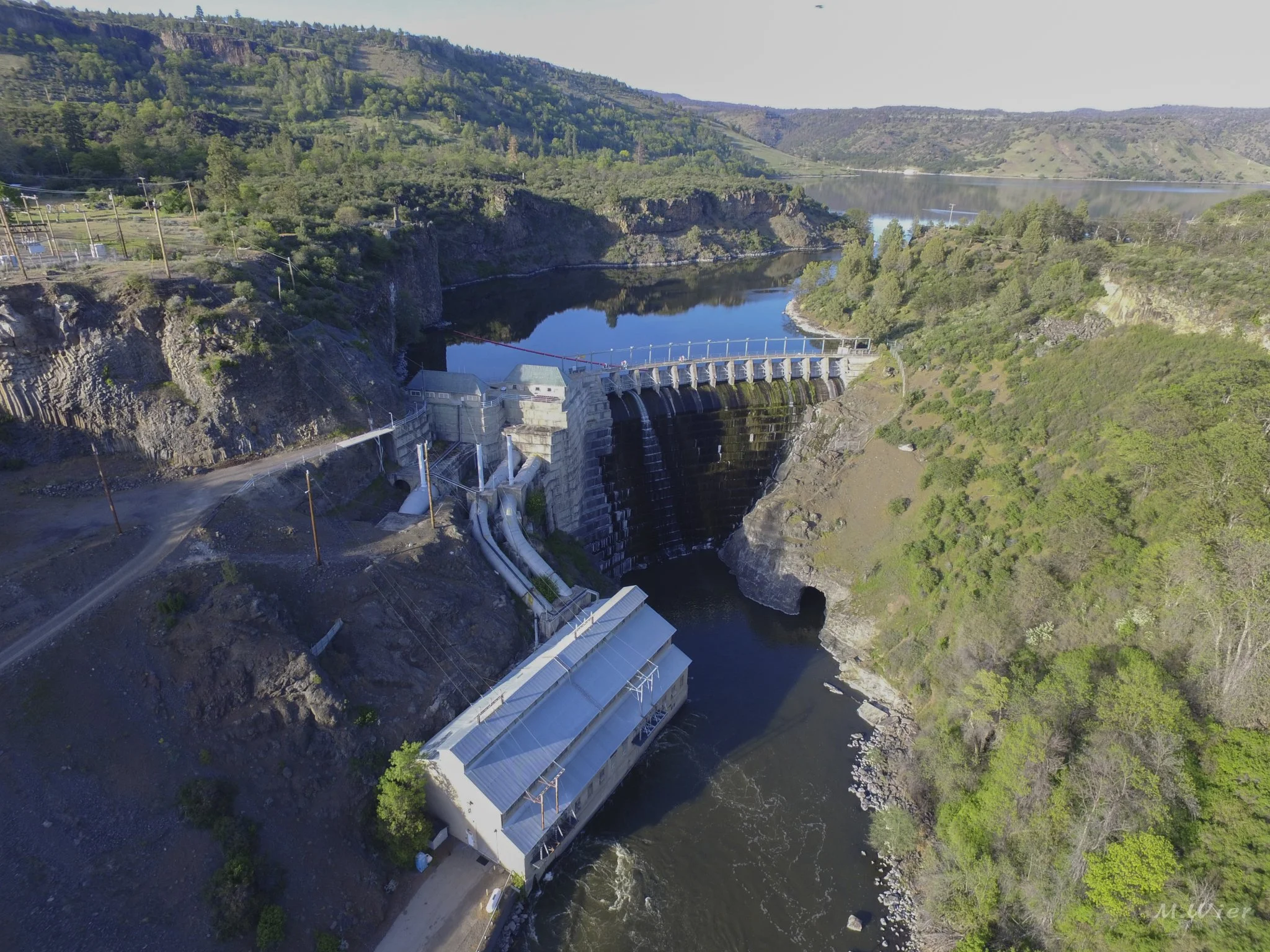Klamath River: Construction staging starts on Copco 1 Dam removal
Plans to liberate the Klamath River from a series of outdated and defunct hydropower dams is moving forward, starting with Copco No. 1, pictured here. Photo by the Klamath River Renewal Corporation.
After a generation of intense work and controversy, the removal of four hydroelectric dams on the Klamath River has begun with the initiation of construction staging for the removal of the Copco 1 Dam. Construction starts for the removal of Copco 2, Iron Gate, and J.C. Boyle will begin next year.
The dams, constructed in the 1920s, 1950s, and 1960s, have played a major role in the destruction of the Klamath River salmon fishery on this major waterway and the north coast of California.
The Klamath River Renewal Project reach, in purple, showing the four dams slated for removal. Map courtesy of the Klamath River Renewal Corporation.
Their removal became possible when the Federal Energy Regulatory Commission initiated the relicensing of the dams two decades ago. (And yes, FOR staff — and tribes and other environmental groups — worked for many years to help set the stage for FERC’s eventual decision.) Finally, in a complicated series of events, the states of Oregon and California and the Klamath River Renewal Corporation received the dams from Pacifcorp, the historic owner of the dams, to remove the dams and restore a large part of the Klamath River to free-flowing status.
The picturesque Klamath River drains nearly 16,000 miles of land and historically supported an extensive ocean salmon fishery. In recent years that fishery has become increasingly stressed. Photo courtesy of the Klamath River Renewal Corporation.
It’s time for a quiet celebration. No, perhaps a boisterous series of celebrations.
See article on approval of Klamath removals, largest in US history
See Undamming the Klamath for more information on the Klamath Dams
See press release from LaMalfa’s office demonstrating controversy over Klamath dam removals



